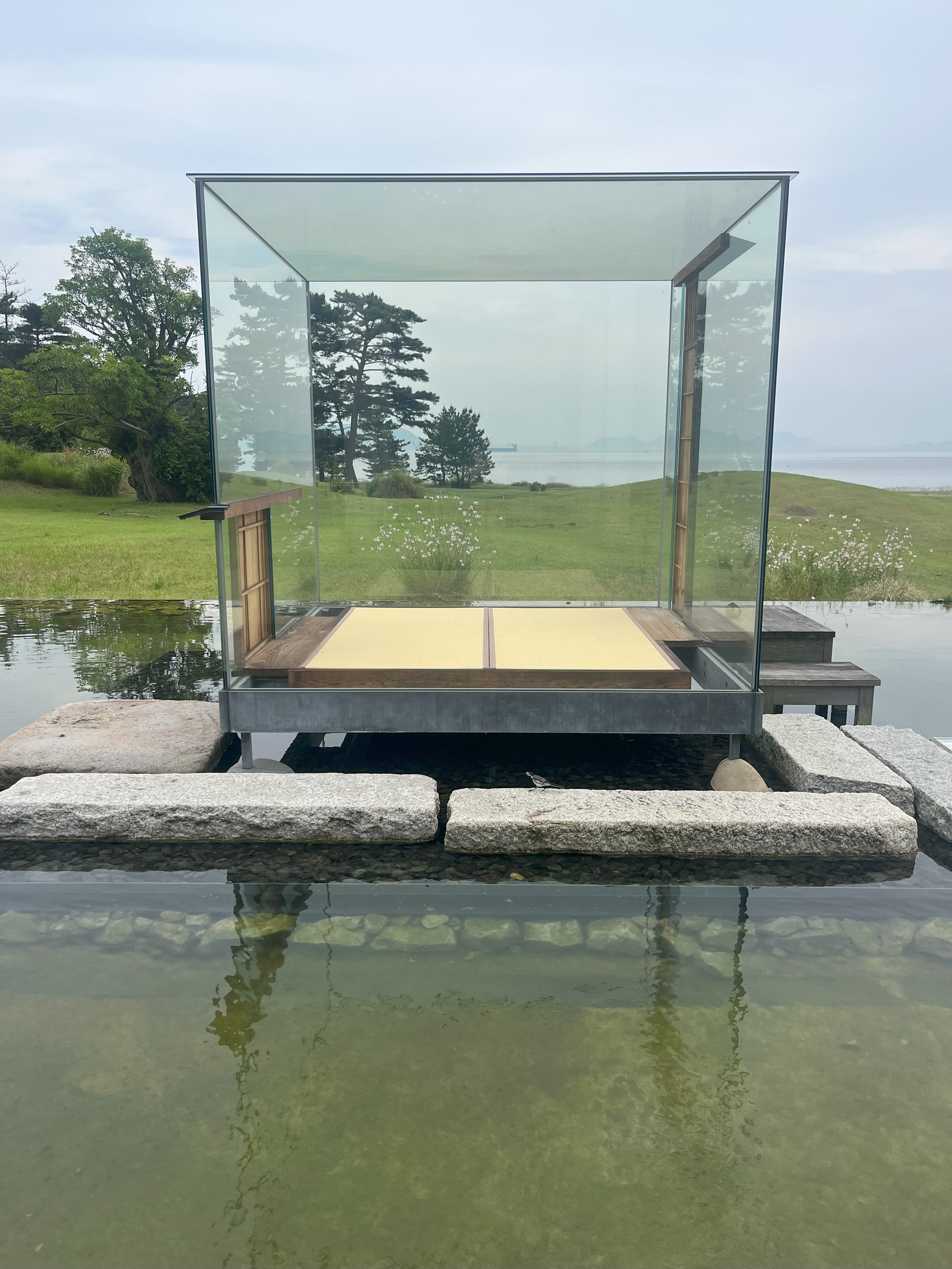Hiroshi Sugimoto Gallery: Time Corridors
On our third day at Naoshima Island, we attended the Hiroshi Sugimoto Gallery, which is also part of Benesse House outdoor exhibition space- only like a 15-20 minute walk from our Yurt accommodation! This gallery focuses on Hiroshi Sugimoto’s artistic influence on Naoshima Island, featuring his works which specialise in photography, sculpture and architectural design.
The view from outside of the gallery! It was so peaceful and beautifully kept!
The first part of the gallery showcased Sugimoto’s photography, which are black and white photographs printed as gelatin silver prints. These photographs feature impressive landscapes, animals, ghostly human presences and empty movie theatres; varying from blurred to highly crisp imagery of the subject matter. I found myself to be particularly interested in Sugimoto’s Hyena, Jackal, Vulture (1976), a beautiful scene of animals in a lonesome, sparse environment; a cinematic still where the animals are perfectly positioned within the frame. It reminds me of my artistic practice in first year, where I especially diverted my attention to animals and different species of birds.
Hyena, Jackal, Vulture, (1976) Gelatin Silver Print, Hiroshi Sugimoto Gallery.
After viewing the photography in the interior of the gallery, we then moved onto the tea house located within the gallery space; an experience that can be purchased for 800 yen where you can enjoy the scenery and artwork whilst drinking tea and having a small sweet dessert. This tea house experience was met with care and great attention to detail, as the staff greeted us at the entrance, sat us down and asked us for our tea of preference. I picked the matcha tea, which had a beautiful grassy taste and natural sweetness; definitely not too bitter like many other matcha drinks I’ve had in the past!
The matcha and the red bean daifuku dessert on the serving board!
The gallery also features a large garden on the exterior of the building, where Glass Tea House Mondrian (2014) is exhibited over a large body of water; an architectural work which comments on traditional Japanese tea culture and social status. I particularly admired how well the work complemented its terrain; all the selected materials, such as glass and tatami suit the environment so well, creating a beautiful connection between the old and new. If anything, Sugimoto’s work further embraces Naoshima’s rich art history, whilst recognising contemporary contexts.
Glass Tea House Mondrian (2014), Hiroshi Sugimoto Gallery.
Overall, I really enjoyed my time at the Hiroshi Sugimoto Gallery. It was one of the most calming experiences I’ve had in a long time, and it felt warm and welcoming with the added hospitality of the tea house. Sugimoto’s work specifically made me consider the importance of selecting specific materials to create works, and how the right ones can create a drastic impact on a work. I’m glad that I have been introduced to Sugimoto’s body of work in such a gentle, comforting way, whilst being immersed in his personal aesthetic vision for his works.



